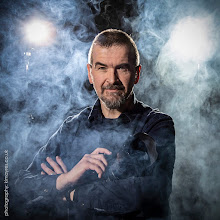Chasing Stars

For at least as long as our ancestors have been human, the night sky is something that has grabbed our imaginations. And for at least 99% of that history, we were able to see the stars clearly on unclouded nights.
However, in the past couple of hundred years, light polution has become a real problem across the developed world. Urban environments are so pervasive there are few places left in Europe which qualify for "dark skies" status. Fortunately, I live not far from one

Original image courtesy of wikipedia
Trying to take photos of the stars, however, even on a completely clear night, is still not an easy task. With so little light available to hit the sensor on the camera, you need very slow shutter speed and a high ISO setting - and both these come with problems.
The slower the shutter speed, the more chance there is of movement blur - either from camera shake (so you need your camera attached to a sturdy tripod), or from the rotation of the Earth itself, which causes star trails (the stars appear as lines, rather than dots).
As for ISO, the higher you go, the "noisier" the image becomes - basically the quality gets progressively worse. My previous camera's ISO settings just couldn't really cope with going very high before the image quality deteriorated to a point of being unusable. However, my new camera copes much better with low-light conditions, and over the past couple of weeks I've been out a few times seeing what was possible.

Loch Ken

From Bridge of Dee, looking back towards New Galloway
A little over a week ago was the much heralded "Super Blood Moon" - where not only was there a lunar eclipse, but it was closer to Earth than usual, increasing the brightness by about 14%. Here in Scotland the Earth's shadow crossing the moon caused it to turn red about 3am
The next time this combination occurs will not be for another 22 years, and in Scotland there will be no guarantee of a clear night - so I decided to stay up and have a go at photographing it.
What I hadn't banked on was the amount of fog about, which created an eerie atmosphere and didn't help with clarity

Is that a wolf I hear howling off in the distance?
So I drove higher into the hills to get above it, found a nice spot overlooking the valley, and settled in for the wait.
Although I got a photo of sorts, I wasn't that happy with it. The fog was still making itself felt a bit, which meant I couldn't get a razor sharp image. And because it was so high in the sky, I couldn't place it in the context of the landscape, which would have made a more interesting photograph.

Not the greatest of Super Blood Moon photos I've seen
However, once the moon did move into the Earth's shadow, it stopped being a source of light pollution and all the stars became much clearer. In the end my favourite shot of the evening (of should that be morning?), I took with when I turned my camera in the opposite direction, looking back down the fog-filled valley.

Satisfaction at last
As always, feel free to click on the images for larger versions.






Post a Comment